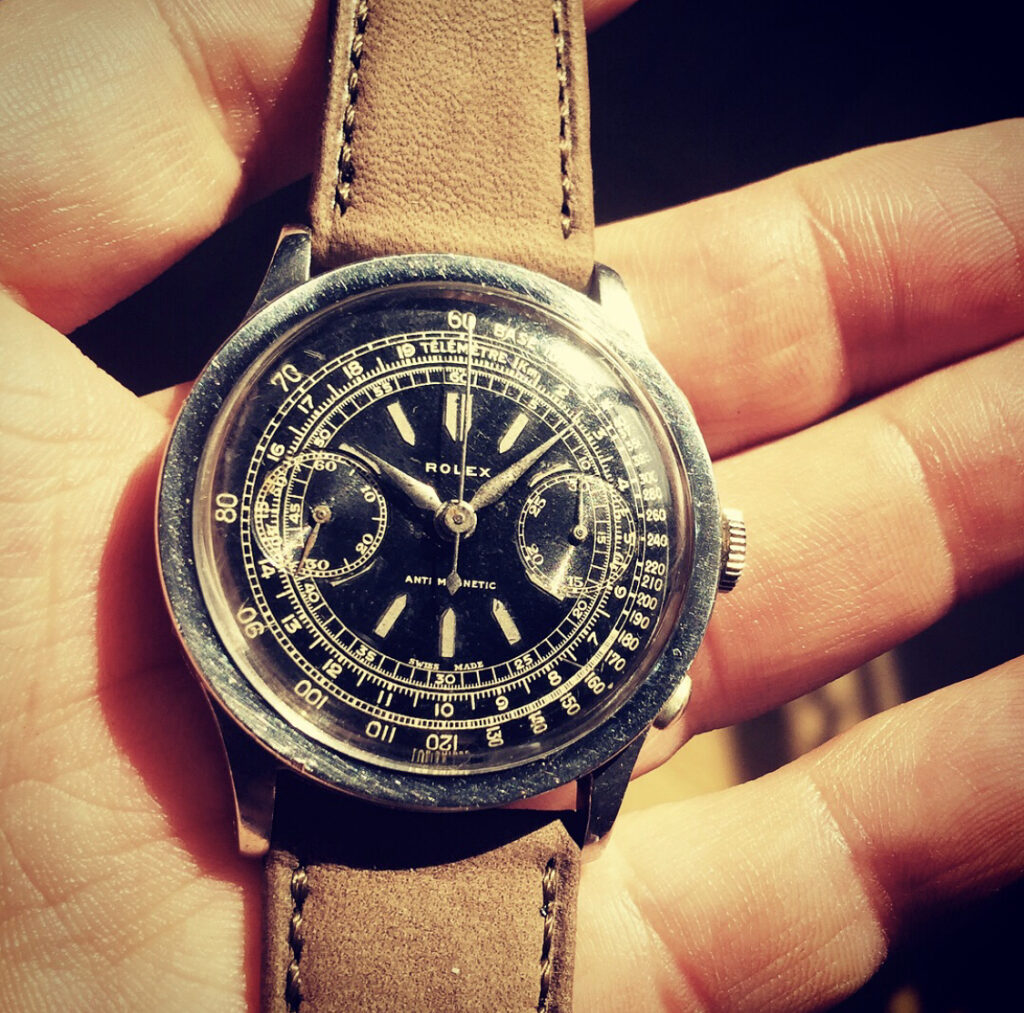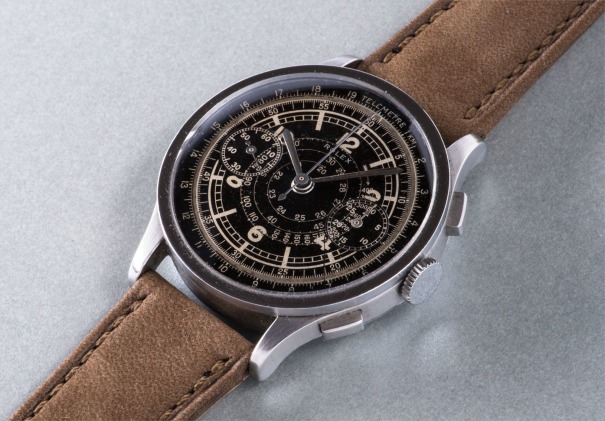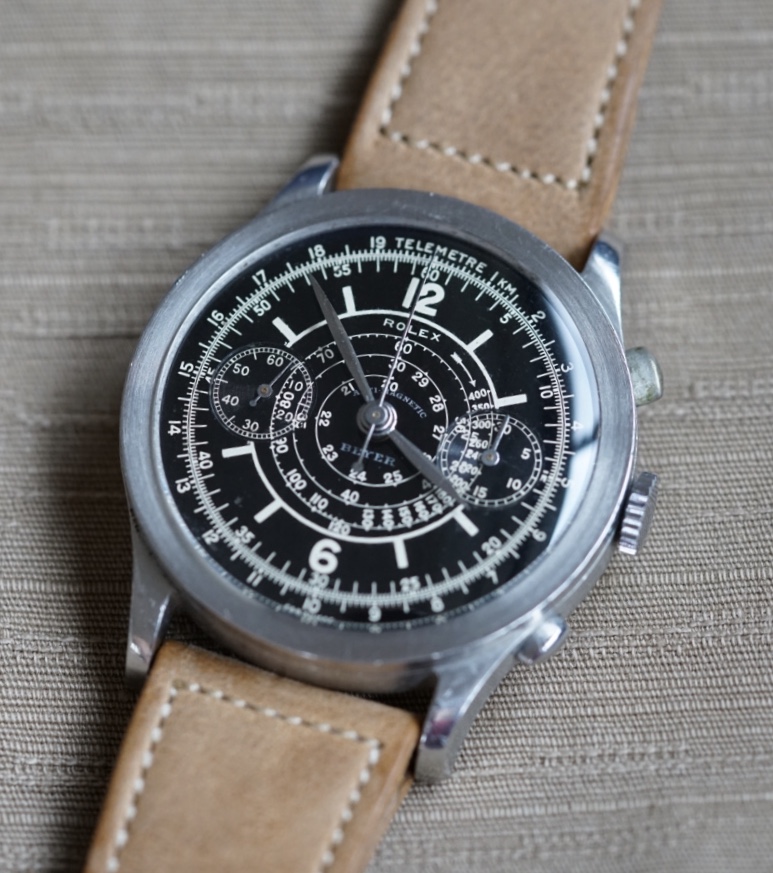A PAK watch doesn’t have to be auctioned a long time ago.
Sometimes you realize just moments after the auction, that this will be a PAK watch. As with this 1936 Rolex 2508 chronograph.
I am all about chronographs made by Rolex before the Daytona era of the 1960s. I have repeated this numerous times on my blog and it worth repeating again. The 6034, in steel and gold, the 6032, the beautiful square 3830 to name a few. Fact is: Rolex made some of the finest chronographs in the world long before the iconic Daytona.
The 2508 also belongs to the top echelon of beautiful and rare chronographs that Rolex once made.
Let us look at it closer.
Introduced in the mid 1930s, the 2508 exists in different metals (gold*, steel) and different dial layout (snail dial, arabic numeral dial, and baton indexes only dial) as well as different dial color (white dial and black dial). While all can be appealing only one dial layout really stands out for its sheer elegance, power and beauty.
It is the black dial with baton indexes and steel case with olive pushers or so called first generation pushers. Like the one Phillips sold back in May 2016. A 1936 Rolex 2508 with black lacquer dial, oversized case and gilt printing.
*(Credit: Phillipswatches).

(picture Credit: Phillipswatches).
The watch stands out for many things.
First, is its splendid black glossy lacquer gilt dial. Secondly, for its oversize case of 37.2mm (the second generation 2508 are 2mm smaller at 35.2mm). Third, this special dial layout of only baton numerals is the most beautiful and pure in my opinion. Fourth, notice the ‘double signed swiss dial’ with both ‘Swiss Made’ and ‘Fab suisse’ written on the dial. Fifth, the playful and beautiful olive or oval type pushers found only on first generation watches. I also love the typical Art Deco Rolex logo and signature found on these early Rolex chronographs. The font of the Rolex signature, which is typical of the 1930s era, is a joy to look at.
These are a lot of details that matter to the Rolex collector.
This watch has a lot of desirable traits that also make it the rarest. It has the rarest dial variant (black), the rarest case type (oversize at 37.2mm) steel, the rarest dial layout (baton indexes only). As we all know by know rarity and details make all the difference to Rolex.

And rarity has its price in the Rolex world.
This watch sold for a whopping CHF 413’000 back in 2016 by Phillips watches and certainly represents a record for any type of 2508 Rolex sold ever.
To point out just how efficient the market was and just how it differentiated another 2508, Phillips sold a very similar 2508 Rolex with black dial just a few months later in the same year. Same model, same black dial, but the details were different. This 2508 was a second generation case which is smaller, with rectangular pushers, a dial layout of arabic numerals mixed with baton and snail dial. It fetched only CHF 125’000. That is because it was the less desirable second generation 2508 and also because the dial had a very small crack in it (slightly past 4 o’clock) from what I can remember.

(Picture Credit: Phillipswatches).
In summary
This PAK watch is also a good study in how efficient and rational the market has acted differentiating two Rolex watches that are the same model, the same metal (steel) and the same black dial (the rarest variant).
The PAK watch belonged to the rare first generation with oversized case and achieved an astounding 240% premium to a similar watch sold by the same auction house a few months later. This first generation 2508 with baton only dial, oversized case at 37.2mm (in 1936!) black lacquer dial is a true PAK watch. It is highly unlikely that a better one will ever surface. We are talking of the pinnacle of Rolex chronographs in terms of rarity, quality, and sheer beauty.
A true Le Monde Edmond type of watch.
I would like to show another beautiful 2508 with a Beyer signed dial. Furthermore, it is distinguished by a ‘snail dial’ layout and so called ‘sector dial ‘. It also belongs to the first generation 2508 with olive pushers. The watch sits in a private collection in Asia.

